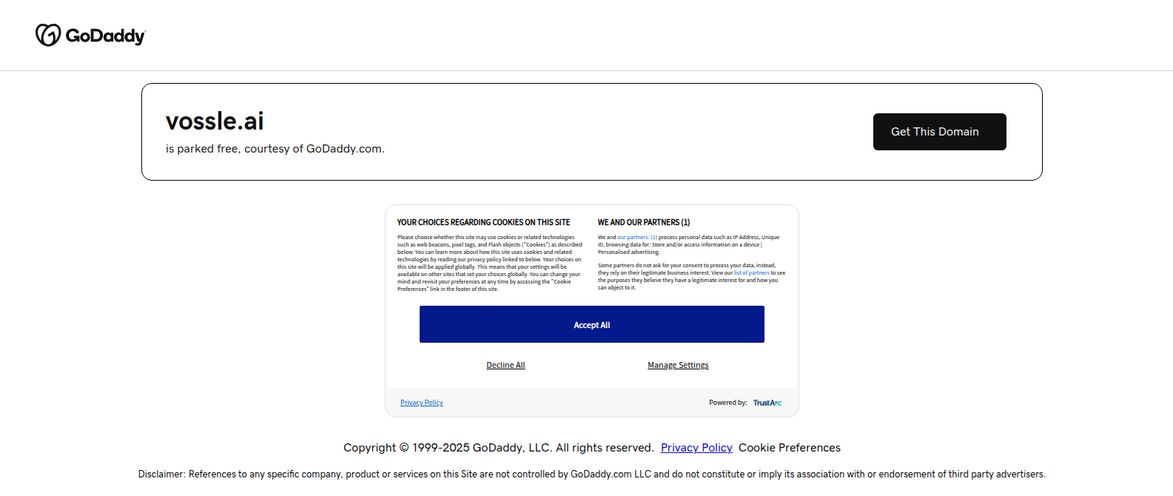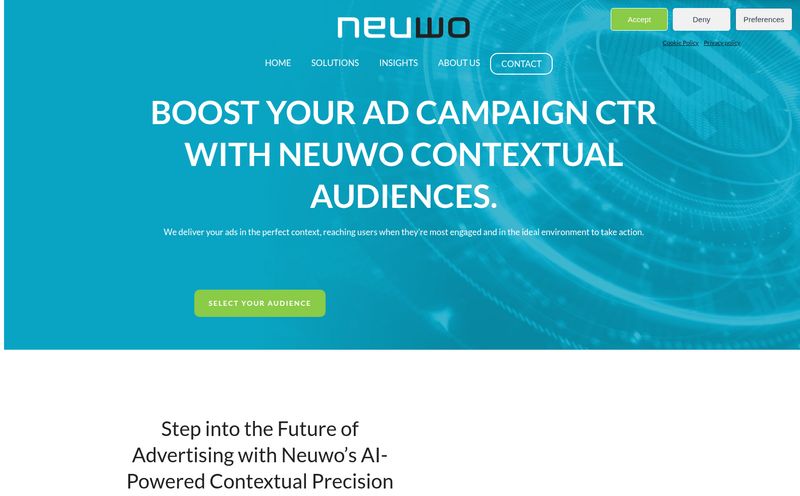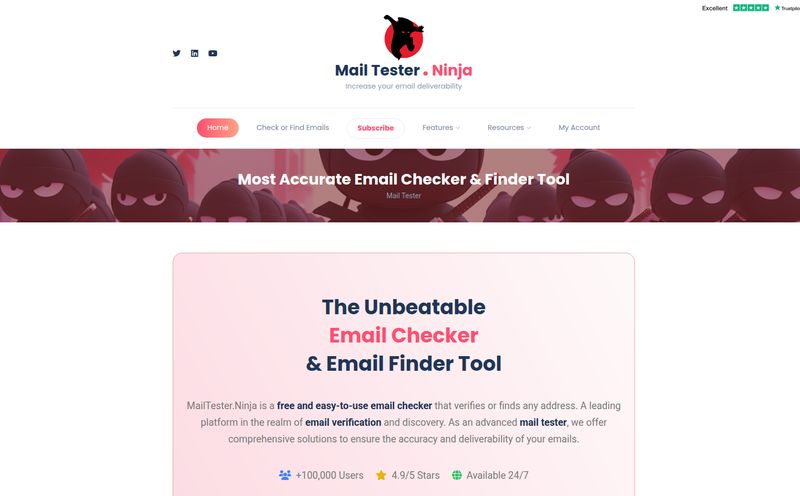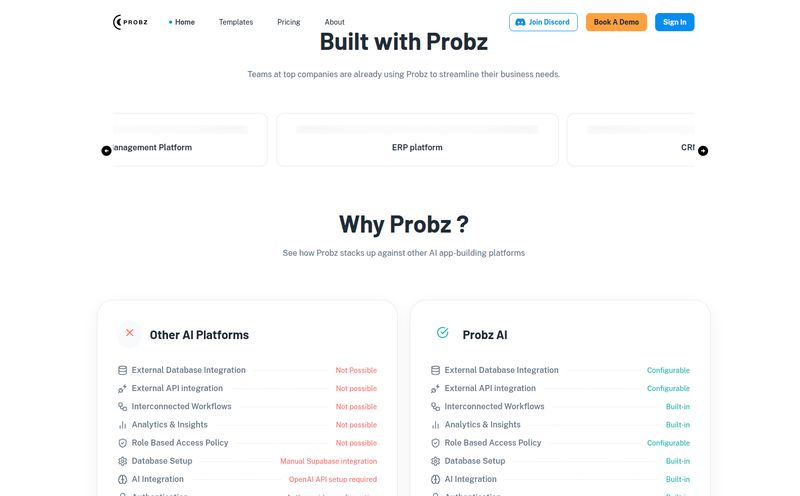You and me. As someone who’s been wrestling with Google’s algorithms and chasing traffic for more years than I’d care to admit, I've seen a lot of 'game-changing' tools come and go. They promise the world, deliver a small country, and then fade away. So when a new name like Og.ai pops onto my radar, my skepticism is already firing on all cylinders.
My first attempt to check them out? I was greeted by a 404 page. Seriously. A big, bold “Welcome to Og.ai” on one page, and a “Not Found” on another. My immediate thought wasn't 'oh this is unprofessional', but rather, 'Ha! I get it. They're either brand new, swamped, or maybe just a little too cool for school.' It's a relatable, human little flaw that, ironically, made me more curious.
Because let's be honest, the core problem Og.ai claims to solve is a monster. We, as marketers, are told constantly to “personalize at scale.” It's the holy grail. We’re supposed to create a unique, tailored experience for every single customer. But then we look at our budgets, our tiny teams, and the sheer number of channels we have to feed... and we just... can't. It's an impossible task. So, does a tool like Og.ai actually bridge that gap? Let’s get into it.
What Exactly Is Og.ai Anyway?
So, cutting through the marketing-speak, Og.ai bills itself as a Marketing AI SaaS (Software as a Service) built specifically for B2C marketers. This isn't just another AI content writer that spits out generic blog posts. The idea here is much bigger. It's positioned as an end-to-end system that handles a critical, three-part workflow:
- It identifies what your consumers are actually thinking and doing in real-time.
- It transforms those raw insights into a concrete content action plan.
- It then produces the actual media campaigns and content, tailored for different channels and local markets, all at scale.
Think of it less like a content vending machine and more like a master chef's entire kitchen staff. You have scouts (the insight finders), a head chef (the strategist), and a whole line of cooks (the content creators), all working in perfect sync. That’s the dream, at least.

Visit Og.ai
The Core Engine Driving Og.ai
A promise is one thing; execution is another. From what I can gather, the platform’s power comes from how it connects three traditionally separate marketing functions. It’s a bold move, because most companies have different teams, and different tools, for each of these steps.
Tapping into Real-Time Consumer Insights
This is the foundation. And the term “real-time” is what makes me sit up and pay attention. For decades, we’ve relied on focus groups, annual surveys, and historical sales data. By the time you get that information, it's already stale. The culture has moved on. A meme has been born and died. A new trend has taken over TikTok. Og.ai claims to bypass that lag by pulling in live signals, presumably from social media trends, search behavior, and other public data firehoses. This means you’re not marketing based on what your audience cared about last year, but what they’re buzzing about right now.
From Raw Insight to Actionable Content Strategy
Here’s where most data tools fall flat on their face. They give you a dashboard with a million charts and say, “Good luck!” The real work is figuring out what to do with all that data. This is probably the most intriguing part of Og.ai's pitch. It allegedly acts as a strategic bridge, taking an insight like “18-24 year olds in the UK are suddenly obsessed with cottagecore-inspired sustainable fashion” and turning it into a campaign structure. It suggests the angles, the formats, and the channels. This could potentially save hundreds of hours in brainstorming and strategy meetings.
Personalized Campaign Production at Scale
And this is the final piece of the puzzle. Once you have the strategy, you still need to create the content. All of it. The ad copy for Facebook, the video script for Instagram Reels, the email newsletter, the blog post... and then you need to create slightly different versions for the US market, the German market, the Japanese market. It’s an exponential nightmare. Og.ai aims to automate this production, generating the personlized creative assets needed to actually run the campaigns defined in the strategy. This is the 'at scale' part, and it's what separates a tool like this from the simple GPT-based text generators out there.
Who Should Be Looking at Og.ai?
Let's be crystal clear: this is not a tool for the solo blogger or a small local business. This is an enterprise-grade solution designed for B2C brands with complexity and scale. I’m thinking about the CMOs at major retail chains, the global marketing heads at CPG companies, or the digital strategy leads at direct-to-consumer brands that operate in multiple countries.
One of the 'cons' I dug up is that it “requires B2C marketers to effectively utilize the platform.” And I actually see this as a positive. It tells me this isn't a 'set it and forget it' magic box. It’s a power tool. You wouldn’t give a Formula 1 car to someone who just got their driver's license. You need a skilled operator who understands marketing fundamentals, who can sanity-check the AI's suggestions, and who knows how to guide the machine to get the best results. Garbage in, garbage out, as the old saying goes.
The Good, The Bad, and The AI-Powered
No tool is perfect. Ever. I've been burned enough times to know you have to weigh the potential wins against the very real hurdles.
The Big Wins with Og.ai
The advantages are pretty obvious and hit on major pain points for any large marketing org. The ability to move at the speed of culture with real-time insights is massive. It closes that agonizing gap between seeing a trend and actually launching a campaign about it. And the sheer productive power of creating personalized campaigns for multiple channels and regions without hiring an army of copywriters and designers... that's the kind of thing that gets a big budget approved. It’s about doing more, faster, and with hopefully more relevance than ever before.
Potential Hurdles to Consider
But, there are always buts. The biggest one for me is the inherent 'black box' nature of AI. The platform’s effectiveness hinges entirely on the accuracy of its algorithms. What if the AI misinterprets a signal? What if it picks up on a niche, toxic conversation and mistakes it for a mainstream trend? This is where that human oversight becomes absolutely critical. You can't just trust it blindly. You have to test, learn, and guide. This is a co-pilot, not an auto-pilot. You’re still the captain responsible for landing the plane.
What About the Price Tag?
Ah, the million-dollar question. Or, more likely, the several-hundred-thousand-dollar question. As I mentioned, my journey to the pricing page ended at a 404 error. This is classic enterprise SaaS behavior. You won't find a neat little table with 'Basic, Pro, and Enterprise' plans for $29/month.
Pricing for a platform this comprehensive is almost certainly quote-based. You'll need to book a demo, talk to a sales rep, and they will build a custom package based on your company's needs—things like the number of users, the volume of campaigns, the number of markets you're targeting, and the level of support required. My advice? If you're seriously considering something like Og.ai, don't expect a bargain. This is a major infrastructure investment, not a simple line item on your credit card. Budget accordingly.
My Final Take as an SEO Guy
So, why does a traffic and SEO guy like me care so much about a B2C campaign tool? Because the lines are blurring. For years, we've known that good SEO isn't just about keywords; it's about user engagement. It's about creating content that people actually want to read and share.
A tool that produces highly-personalized, relevant content at scale has huge implications for organic traffic. Imagine being able to generate dozens of landing pages, each tailored to a specific long-tail search intent that your real-time insights identified. Imagine your blog content aligning perfectly with the current cultural zeitgeist, leading to higher engagement signals—like time on page and lower bounce rates—that tell Google, “Hey, this page is incredibly helpful!” In the age of Google's Helpful Content System, proving your content's value to a specific audience is everything. A platform like Og.ai, used wisely, could be a powerful engine for creating that kind of verifiably helpful content.
Frequently Asked Questions about Og.ai
- Is Og.ai meant to replace human marketers?
- Absolutely not. Based on its own description, it's a tool that requires skilled marketers to operate it. Think of it as a massive force multiplier, not a replacement. It handles the repetitive, time-consuming tasks so humans can focus on high-level strategy and creative direction.
- Is Og.ai for small businesses or large enterprises?
- Everything about it screams enterprise. The scale of the problem it solves (global personalization), the likely pricing model, and the need for a sophisticated marketing team to run it all point towards large B2C corporations.
- How does Og.ai get its consumer insights?
- The company doesn't specify its exact data sources, but platforms like this typically tap into a wide range of public data streams. This could include social media APIs (for trend analysis), search engine data, news outlets, and forums to get a real-time pulse on public conversation.
- How is Og.ai different from AI writers like Jasper or ChatGPT?
- The difference is strategy and workflow. Tools like ChatGPT are pure generative models; you give them a prompt, they give you text. Og.ai is designed as an integrated system. It starts with data analysis to decide what to create, builds a strategic plan, and then generates the content for multiple formats, connecting insight to execution.
- Can I get a free trial for Og.ai?
- It's highly unlikely. Enterprise SaaS platforms of this nature almost never offer free trials. The standard process is to request a personalized demo where their team will walk you through the platform and see if it's a good fit for your company.
The Verdict on Og.ai
So, where do I land on Og.ai? Cautiously optimistic. The ambition is huge, and it's aimed squarely at one of the biggest, most persistent problems in modern marketing. If it delivers on even 80% of its promise, it could be an incredibly powerful asset for the right company.
It's not a magic wand. It won't fix a broken marketing strategy. But for a large, savvy B2C marketing team that feels constantly constrained by resources and time, Og.ai could be the engine they need to finally execute on that dream of true personalization at scale. It represents a more mature vision for AI in marketing—not just as a content creator, but as a strategic partner. And that, I think, is something to be genuinely excited about.



